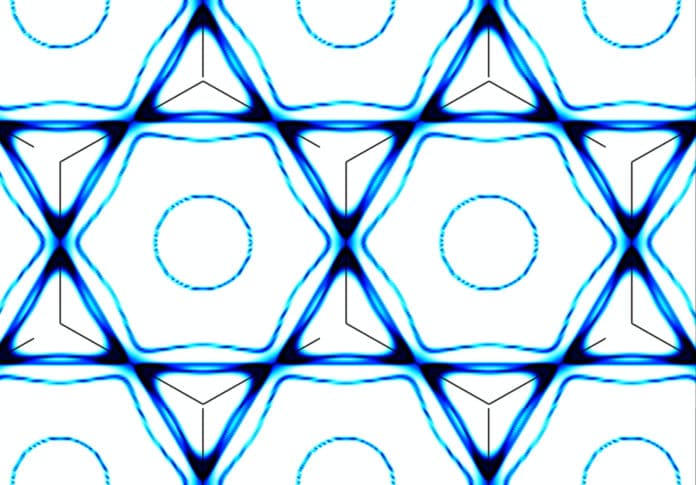Kagome metals exhibit a range of strongly correlated electronic phases, including charge order and superconductivity.
In a kagome superconductor, when the material is cooled to 3 Kelvin (approximately minus 454 degrees Fahrenheit), the electrons move in pairs, like couples at a dance. At 100 Kelvin, the kagome material displays one more strange behavior known as charge density waves, where electrons arrange themselves in the shape of ripples.
However, it is not yet understood how the distinctive electronic structure of the kagome lattice is linked to the observed many-body phenomena.
MIT physicists and colleagues, including from Berkeley Lab, have discovered the secret sauce behind the exotic properties of this quantum material. It happens due to another behavior known as an electronic singularity, or the Van Hove singularity, which involves the relationship between the electrons’ energy and velocity.
When electrons interact in the presence of singularity, they pair up and become superconducting or form charge density waves.
MIT assistant professor of physics Riccardo Comin said, “Relating the energy to the velocity of electrons in a solid is challenging and required special instruments at two international synchrotron research facilities: Beamline 4A1 of the Pohang Light Source, and Beamline 7.0.2 (MAESTRO) of Berkeley Lab’s Advanced Light Source (ALS). A synchrotron is a particle accelerator that generates extremely bright light beams ranging in photon energies from the infrared through X-rays.”
Using a technique called Angle-resolved Photoemission Spectroscopy, or ARPES, scientists were able to identify and measure the velocities of the electrons central to the exciting properties of the material.
ALS staff scientist Chris Jozwiak said, “You need a large light-source user facility like the ALS to do sophisticated experiments with new materials. The MAESTRO beamline at the ALS offers an exact and bright source of photons that can be tuned to a wide range of wavelengths or energies. If our doors weren’t open to the public, work such as this exciting discovery by the Comin group wouldn’t be possible.”
Journal Reference:
- Kang, M., Fang, S., Kim, JK. et al. Twofold van Hove singularity and origin of charge order in topological kagome superconductor CsV3Sb5. Nat. Phys. 18, 301–308 (2022). DOI: 10.1038/s41567-021-01451-5
